#Terry LaBan
Explore tagged Tumblr posts
Text

CUD #4
by Terry Laban
Dark Horse
7 notes
·
View notes
Text

Muktuk Wolfsbreath: Hard Boiled Shaman #1 - 1998, cover by Alex Horley.
#comic books#dc comics#vertigo#alex horley#muktuk wolfsbreath#steve parkhouse#terry laban#mini series
2 notes
·
View notes
Text

Dark Horse Presents #93 (January 1995) cover by Terry LaBan.
19 notes
·
View notes
Text
JewCE 2024: Exploring Jewish Humor in Comics
JewCE 2024: Exploring Jewish Humor in Comics #jewce #jewce2024
From JewCE 2024, two MAD contributors, two comic strip artists, and an Israeli cartoonist walk into a panel…. Join professional funnypeople Arie Kaplan (MAD Magazine, The Day I Became a Potato Pancake), Chari Pere (MAD Magazine, Corona Mama), Hilary Price (Rhymes With Orange), Terry LaBan (Edge City, Mendel the Mess-Up), and Uri Fink (Zbeng!) for a serious(ly fun) discussion about humor.
#arie kaplan#chari pere#Hilary Price#jewce#jewce: the jewish comics experience#terry laban#uri fink#video
0 notes
Text
If you're wondering who Jack Oleck's audience was for Theodora-- softcore historical smut with downer emo intervals and a HEA-- well, it was 16 year old me! Yes, I wanted smut that with a gloss of historical research. I read that book several times, and I think my only complaints were "less racism and more time with the hero, please." I don't think it would have taken much work to turn it into an actual romance novel, but the genre didn't exist yet per se (Theodora came out in 1971, and The Flame and the Flower by Kathleen Woodiwiss wasn't published until 1972).
Man, I thought I was the only one who hated A Chronicle of Deaths Foretold. I have no idea why Justinian was given so much... hair. He looks more 1970s than 540s.
Speaking of fantasy Byzantine subjects, there was a fantasy Byzantine Empire ("Byrzenia") in Terry Laban's comic Battleaxes, which is all about a gang of female Norse-esque mercenaries. On the bright side, there was a cute prince named Alexis; but, on the less than bright side, there was not only ridiculous boob plate armor and midriff tops, but there was also a lot of exploitative and rather gross late '90s depictions of lesbians and sex workers (including Alexis's sister, a powerful princess who is also of course an evil lesbian).
Here's some of the art:

So yeah...
Anyway, have you read Gillian Bradshaw? What are your thoughts on her?

@suburbanbeatnik OK SO:
As far as the “mixing up different historical eras” problem goes, this actually happens in a lot of different novels. Theodora by Samuel Edwards is the most blatant example I can think of at the moment—near the end of the book, a horde of Huns, inexplicably led by Khosrow, starts marching on Constantinople while Justinian is in his plague coma, and Theodora sells the crown jewels (I don’t believe the narrative specifies the buyer) to fund Belisarius and his troops, who are the city’s last defense. Khosrow is similar to Mehmed II, Theodora takes on the role of Anna of Savoy, and the overall political situation is implied to be very bad for Byzantium, with Constantinople on the brink of total failure and most of the empire's territory gone. (Like, there’s discussion of Justinian and Theodora meeting the invaders at the gates so they can die together, because they think the whole empire is collapsing.) The story does end with the Byzantines winning (using Greek fire, another anachronism), and Theodora gets her jewels back (I do not remember how), but yeah, the author completely blended two very different periods together. Different variants of this exact plot appear in different novels—a *lot* of books treat the 540s as politically similar to the 1200s or 1300s, and a *lot* of books have Theodora sell her crown for some reason or another, usually to fund the defense of the City or one of Justinian’s schemes. (One book–maybe one of the ones by Marié Heese? I can’t think of the title, sorry)—had her sell her jewels to fund the building of the Hagia Sophia. (She gets them back in that book, too—I think Narses literally just discovers an enormous stockpile of gold somewhere, and that fixes the financial problems.) And a lot of different books put Belisarius in a Heraclius or Basil-like role, although I’m less well-versed in Belisarius books than I am in Theodora books. (The Sarantine Mosaic by Guy Gavriel Kay definitely did this—the character of Leontes is pretty much Heraclius and Belisarius combined, while Valerius and Aliana are straightforward Justinian and Theodora equivalents, except for the fact Aliana is the equivalent of an iconodule rather than a Monophysite. But that gets a pass, imo, because it’s not pretending to be totally accurate.)
Religious inaccuracies and mixups are also really common overall, especially in older books. One Victorian-era book called Blue and Green, or the Gift of God: A Novel of Old Constantinople was very bad with this, presumably because the author was a British Protestant who made no secret of his disdain for the “pagan heathenism” of the Byzantine Empire. (His descriptions of religious ceremonies are very funny, because he describes them as, like, Christian ceremonies, if Christian ceremonies had strippers and drugs. The inciting incident of Theodora’s spiral into prostitution is her doing an erotic dance at a respectable, aristocratic wedding—not a bachelor party, an actual wedding—and this is presented as normal.) Really, you can probably just check out any Byzantine book from before, say, the 1980s on archive.org, and there’ll be weird religious anachronisms all over the place. Lots of authors bring iconoclasm or the East-West Schism (the one that happened in 1054) into the sixth century, I guess because those are more recognizable and dramatic than the Monophysite thing. Authors tend to put Justinian and Theodora on the opposite sides of these conflicts, and Theodora is usually on whatever side they consider “wrong,” which differs significantly from book to book depending on the author’s religious leanings.
Regarding the Theodora/Macedonia thing—Ross Laidlaw’s Justinian: The Sleepless One definitely did this (there were a couple of cringe sex scenes in this book—he always referred to Macedonia as “the other one,” I guess to avoid saying her name a bunch of times? It’d be like “Theodora felt the other one’s lips...” and so on. It sounded so strange.) Macedonia was Theodora’s main love interest—Theodora does marry Justinian, and she likes him well enough as a person, but she’s pretty explicitly gay and uninterested in men, and she has an affair with Macedonia until Macedonia dies in an earthquake. I believe Stella Duffy’s Actress, Empress, Whore duology also had Theodora and Macedonia hook up, but Duffy’s sex scenes were less fetishistic and cringeworthy, and their relationship didn’t last for the entirety of the novel. Theodora having sex (or sexually charged interactions) with Antonina, Macedonia and her other female friends is reasonably common in shitty Theodora novels in general, but it’s never, like, a plot point. It’s just an excuse for the author to write about attractive young women getting it on in the Roman baths, or whatever other fetish-y nonsense piques his interest.
These points aren’t even the weirdest things about most of these books, though. I should just sit down one day and do a full post about all of the absurd things that happen in Justinian and Theodora stories, because shit gets real weird in most of them. Messy historical anachronisms and fetish-y male-gaze lesbian sex scenes are nowhere near the strangest aspects of some of these books—remind me, one day, to talk about all of the Penis Diseases these authors invent to explain away Justinian and Theodora's infertility.
26 notes
·
View notes
Text


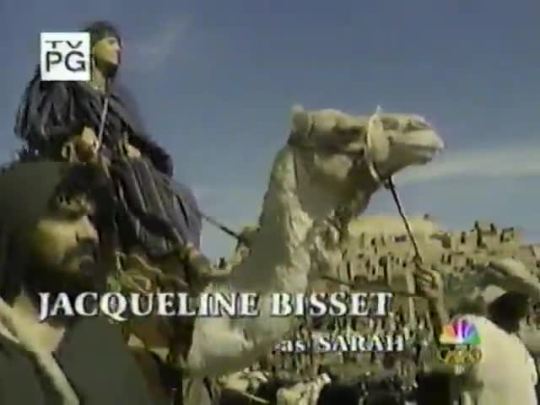




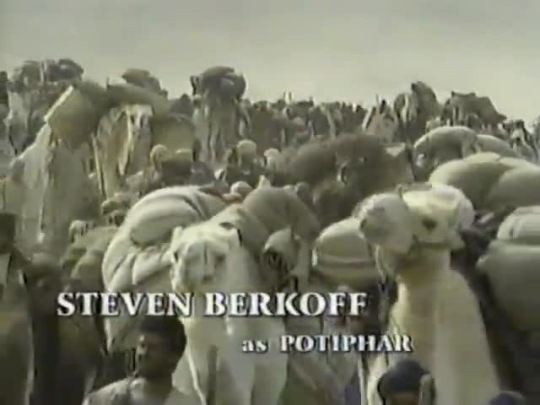

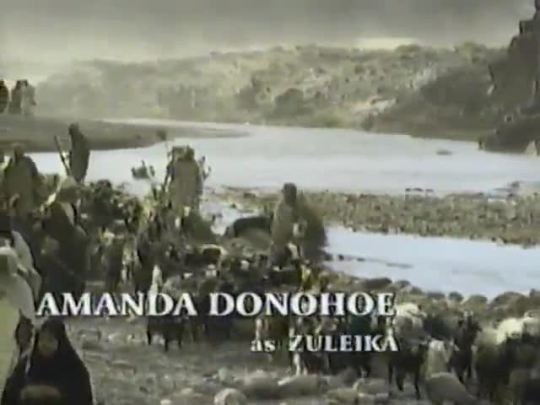
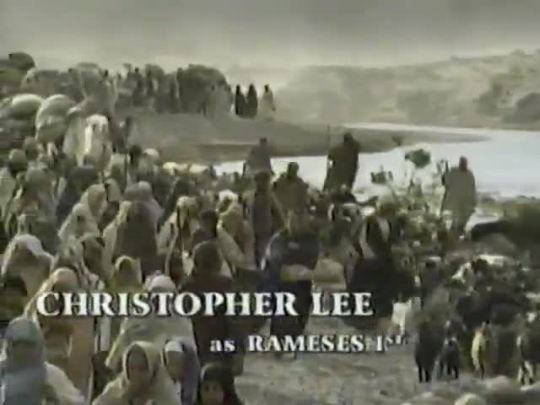


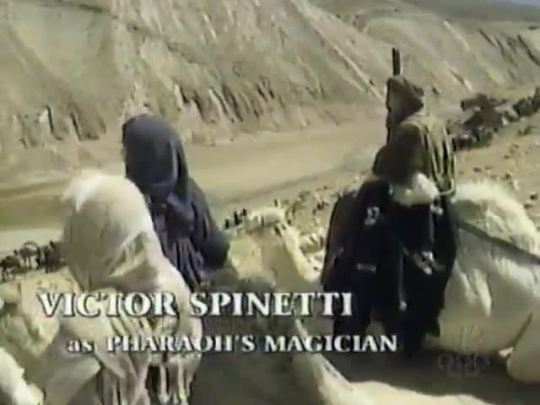
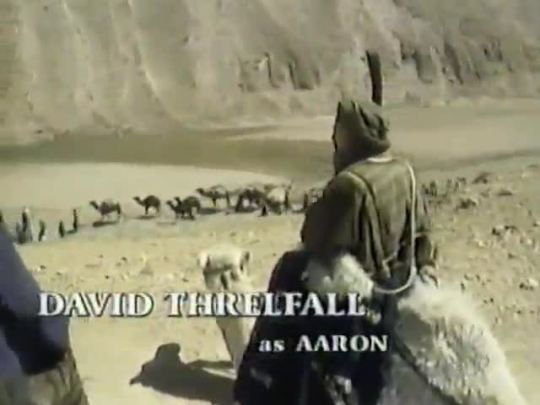

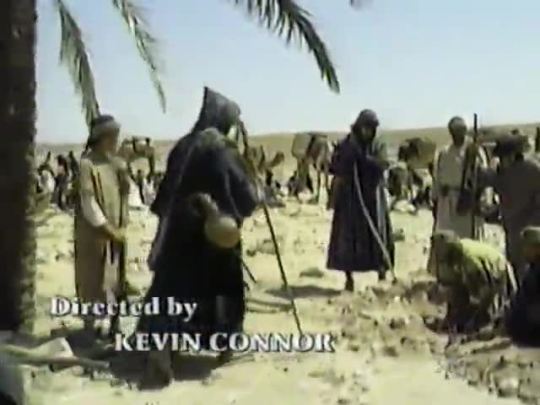
In The Beginning - NBC - November 12-13, 2000
Biblical Drama (2 episodes)
Running Time: 189 minutes total
Stars:
Martin Landau as Abraham
Jacqueline Bisset as Sarah
Billy Campbell as Moses
Eddie Cibrian as Joseph
Fred Weller as Jacob
Alan Bates as Jethro
Steven Berkoff as Potiphar
Geraldine Chaplin as Jochebed
Amanda Donohoe as Zuleika
Christopher Lee as Ramesses I
Art Malik as Ramesses II
Rachael Stirling as Young Rebeccah
Diana Rigg as Mature Rebeccah
Victor Spinetti as Happatezoah
David Threlfall as Aaron
David Warner as Eliezer
Terri Seymour as Eve
Sendhil Ramamurthy as Adam
Sean Pertwee as Isaac
Andrew Grainger as Esau
Jonathan Firth as Joshua
Danny Webb as Laban
Frank Finlay as God's voice (uncredited)
Archie Panjabi as Basya
#In the Beginning#TV#NBC#Biblical Drama#2000#2000's#Martin Landau#Jacqueline Bisset#Billy Campbell#Eddie Cibrian#Fred Weller
4 notes
·
View notes
Text
Mendel the Mess-up by Terry LaBan.
Mendel the Mess-up by Terry LaBan. Holiday House, 2024. 9780823453566 Rating: 1-5 (5 is an excellent or a Starred review) 5 Format: Hardcover graphic novel Genre: Humor What did you like about the book? Mendel lives in a tiny village you’ve probably never heard of. It’s not exciting; there’s little water with turnips being the main source of food. Their main source of income is Kvatch, a drink…

View On WordPress
0 notes
Text
Rare, obscure and previously unpublished comics, including: “Kids These Days” (Starring Buddy Bradley) by Peter Bagge, “The He That Walks” by Jaime Hernandez, “Scratchy Screwballs” by R. Crumb, “Say, Man…” by Gilbert Hernandez, “Let The Punishment Fit The Crime” by Daniel Clowes & Peter Bagge, “Me ‘N’ Her” by Terry Laban, “Bitchy Bitch” by Roberta Gregory, “Frank” by Jim Woodring, “Idiotland” by…

View On WordPress
0 notes
Text
Heavy Metal Magazine - No.156, May 1995

FOR SALE! FIND THIS ITEM & MORE AT screaming-greek.com or check out the link in my bio... Heavy Metal Magazine - No.156 (Vol. 19, No.2) May 1995 Featuring artists: Bruno Brindisi, Michael Aushenker, Terry LaBan, & more. Writer/Editor: Kevin Eastman Pre-Owned - Modern Age Comic/ Adult Illustrated Fantasy Magazine - Metal Mammoth Inc. Read the full article
0 notes
Text

The Dreaming #1: The Goldie Factor
by Terry LaBan; Peter Snejbjerg; Daniel Vozzo and Todd Klein
DC/Vertigo
3 notes
·
View notes
Text
The Dreaming #1 (1996) Dave McKean Cover, Terry LaBan Story, Pencils by Peter Snejbjerg "The Goldie Factor, Part One" Goldie gets fed up with the way Cain is murdering Abel all the time and so leaves the House of Secrets. Premiere issue expanding on the Sandman Universe, the realm of Dream and its inhabitants. https://www.rarecomicbooks.fashionablewebs.com/Sandman%201989.html#Dreaming #RareComicBooks #KeyComicBooks #Keycomics #RareComics #DCComics #DCU #DCUniverse The comic book is in Near Mint+ condition. Like NEW. All comics are shipped in a bag, back board, with a tracking number, and in heaving duty shipping box! Rare Comics strong sturdy boxes help prevent damage to your comic books.

#the dreaming#dave mckean#peter snejbjerg#rare comic books#key comic books#dcuniverse#dc comics#dcu#vertigo#the sandman
0 notes
Text
How it started

Daisy gets a job as a private detective's assistant, who turns out to be a totally incompetent coward.
How it's going

By the end of the story Daisy has opened her own agency and her former boss is ruined.
"Daisy mouille le maillot" (Hard-Boiled Daisy), D 2008 151, in Le Journal de Mickey La Compil 8, January 2022, written by Terry LaBan, art by Daniel Pérez
According to I.N.D.U.C.K.S. this is the third time this 2011 Danish story is published in France. We Frenchies sure love girl boss Daisy.
17 notes
·
View notes
Photo

Battleaxes
Volume: 1 #2
How the Other Half Lives
Writers: Terry LaBan
Pencils: Alex Horley
Inks: Alex Horley
Covers: Alex Horley
Vertigo
7 notes
·
View notes
Text
Scanlation: Tell All
Story: Terry LaBan Art: Andrea Ferraris First published: 15.10.2012
INDUCKS link







#andrea ferraris#my scanlations#uncle scrooge#donald duck#flintheart glomgold#scanlations#terry laban
123 notes
·
View notes
Photo

7 notes
·
View notes
